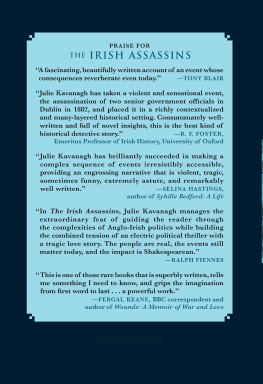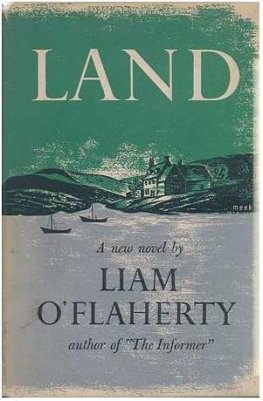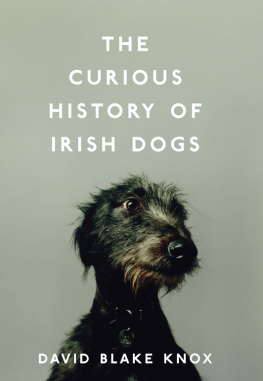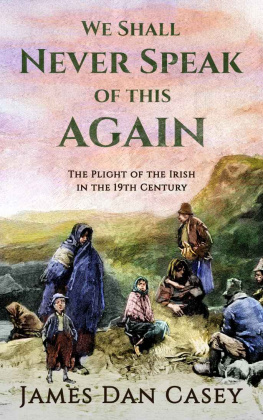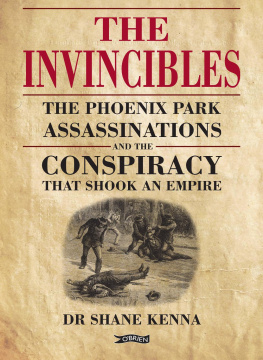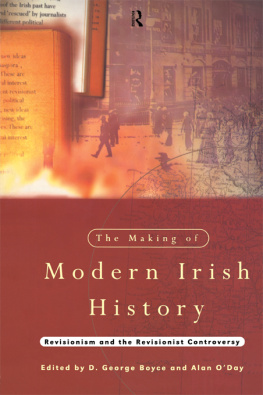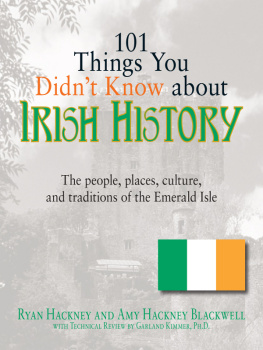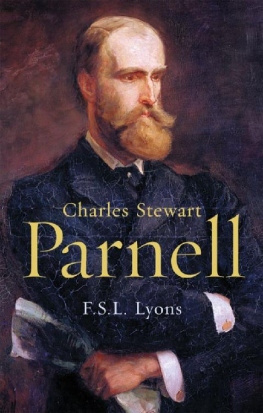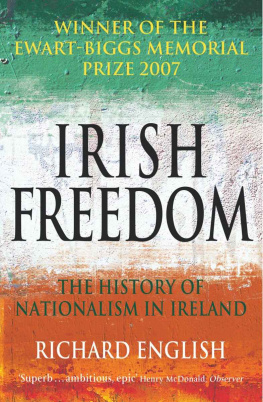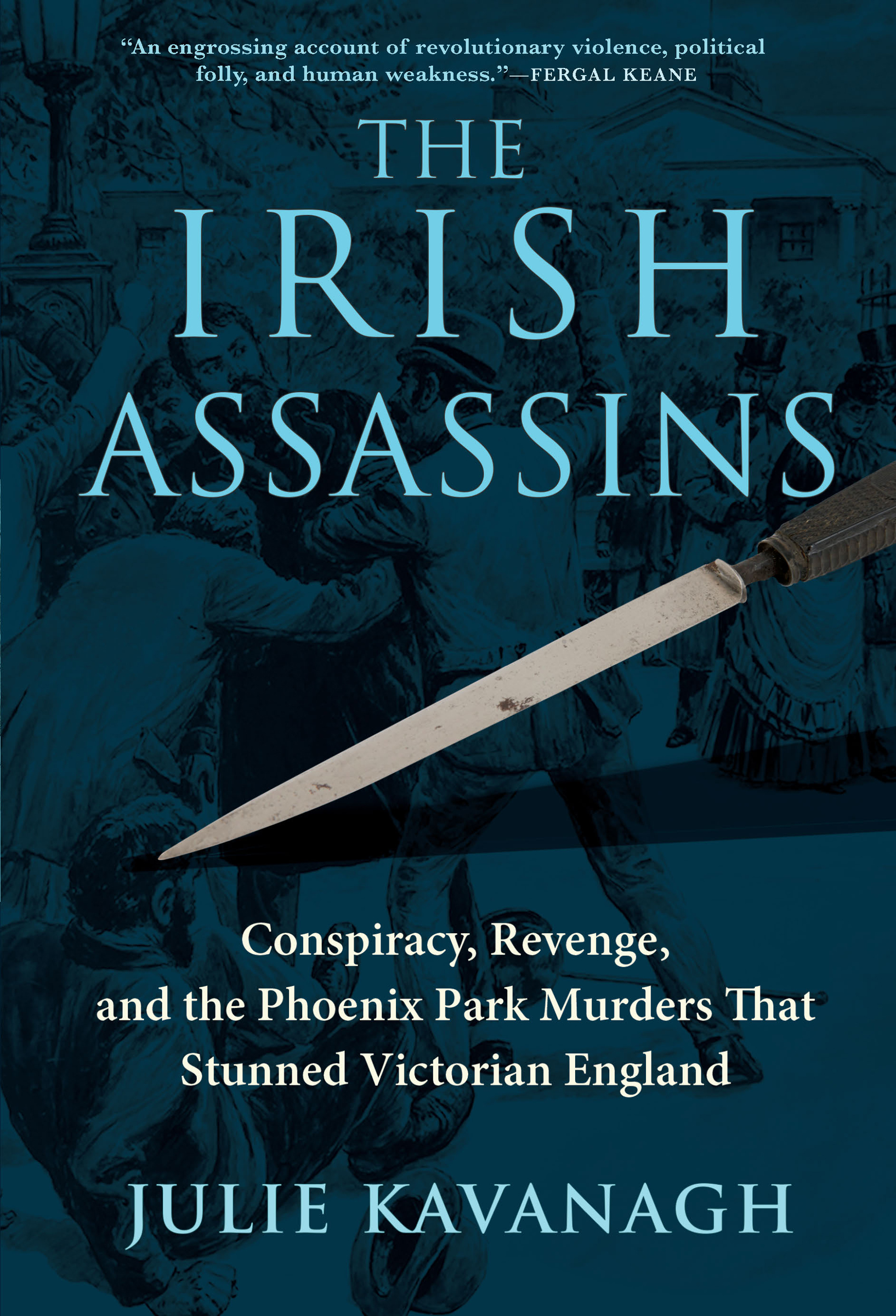Contents
Guide
Pagebreaks of the print version
Also by Julie Kavanagh
Secret Muses: The Life of Frederick Ashton
Rudolf Nureyev: The Life
The Girl Who Loved Camellias: The Life and Legend of Marie Duplessis
THE IRISH ASSASSINS
Conspiracy, Revenge, and the Phoenix Park Murders That Stunned Victorian England
JULIE KAVANAGH

Atlantic Monthly Press
New York
Copyright 2021 by Julie Kavanagh
Jacket design by Gretchen Mergenthaler/Background illustration: The Phoenix Park Murders, 1882, gouache on paper, by Cecil Doughty (1965) Look and Learn; Amputation knife\ Science Museum / Science & Society Picture Library. All rights reserved.
All rights reserved. No part of this book may be reproduced in any form or by any electronic or mechanical means, including information storage and retrieval systems, without permission in writing from the publisher, except by a reviewer, who may quote brief passages in a review. Scanning, uploading, and electronic distribution of this book or the facilitation of such without the permission of the publisher is prohibited. Please purchase only authorized electronic editions, and do not participate in or encourage electronic piracy of copyrighted materials. Your support of the authors rights is appreciated. Any member of educational institutions wishing to photocopy part or all of the work for classroom use, or anthology, should send inquiries to Grove Atlantic, 154 West 14th Street, New York, NY 10011 or permissions@groveatlantic.com.
FIRST EDITION
Published simultaneously in Canada
The book is set in 13-point Centaur MT by Alpha Design & Composition of Pittsfield, NH.
First Grove Atlantic edition: August 2021
Library of Congress Cataloging-in-Publication data is available for this title.
ISBN 978-0-8021-4936-7
eISBN 978-0-8021-4938-1
Atlantic Monthly Press
an imprint of Grove Atlantic
154 West 14th Street
New York, NY 10011
Distributed by Publishers Group West
groveatlantic.com
2122222310987654321
For my father
CONTENTS
A BRIEF HISTORY
EVERY READER of this book will know about the age-old hostility between the Irish and the English, but not everyone will know how, when, and where it started. It was in 1170, to be precise, that first invaded Ireland, going on to grab the best land and introduce their own feudal systema hierarchy of master and serf, landlord and tenant that was still in place more than seven hundred years later. Since then, the theme of violence between the two placeserupting, receding, erupting againhas never entirely disappeared. The muraled peace walls separating Catholic and Protestant neighborhoods in Northern Irish cities like Belfast and Derry had been prefigured in the fourteenth century by the thorny hedges and ten-foot ditches bounding The Pale, an area covering Dublin and its surroundings, under protection of the Crown and governed by its rules. It was considered to be a pocket of safety and civilization in marked contrast to the barbarous conditions of Irish life outside (and is the origin of the expression beyond the pale).
This divide, their religion or our religion, intensified during the Reformation, when Protestantism replaced Roman Catholicism as the national church in England and Ireland, and Irish Catholics were seen as dangerous worshippers of the anti-faith. Henry VIII had broken ties with Rome when the pope refused to annul his first marriage and made himself supreme head of the English Church. He was also named king of Ireland, but his daughter, Queen Elizabeth, took much firmer control of their neighboring island. Fearing that her enemythe Spanish Catholic King Philipwould use Ireland as a foothold to launch an attack on England, she decided to populate the country with loyal subjects. This involved confiscating vast quantities of land from powerful Gaelic families in the province of Munster and planting Irish estates with English and Scottish settlers.
One of the first arrivals was the great Elizabethan poet shrunk into his jaws, is the very image of the Irish famine victim.
It was as if the English felt themselves absolved from all ethical restraints when dealing with the Irish. The divine right of kings legitimized the use of force in maintaining the dominion of the sovereign, and as the insurrections of the Irish amounted to treason, Englishmen had Gods sanction to keep the rebellious natives in their thrall. Right of conquest had also validated Englands confiscation of Irish land.
Ultimately, in 1641, the long-suppressed Irish retaliated with a wave of horrific attacks. Queen Elizabeths successor, James I, had followed her policy of planting Irish estates with English and Scottish settlers and was concentrating on Ulster, the center of residual Gaelic resistance. Native resentment erupted: a County Armagh widow was captured by insurgents, who drowned five of her six children; in Portadown, one hundred English Protestants were herded from the sanctuary of a church, marched to a bridge over the River Bann, and forced into the wintry waters, where they died of exposure, drowned, or were shot by musket fire. As always, though, Britain, with its far superior military resources, had the upper hand. Retaliation for the 1641 , and the reconquest of Ireland (which, following the English Civil Wars, had become the monarchys last chance of retaining the throne), resulted in one of the most shocking war crimes ever recorded.
In August 1649, six months after the execution of King Charles I, the parliamentarian General Oliver Cromwell decided to crush any remaining Royalist loyalty among Irish Catholics by conducting a massive campaign of ethnic cleansing. During his nine-month rampage, six hundred thousand perished, including fifteen hundred deliberately targeted civilians. Landowners, given the choice of going to hell or to Connaught, were forcibly driven west to the bleakest and poorest of the provinces, where they were allowed 10 percent of their original acreage. And yet, the vast majority of Cromwells contemporaries applauded his ruthless mission. To Irish Protestants, he was a brave deliverer who put down popery and set them free, while the celebrated English poet and parliamentarian Andrew Marvell endorsed Cromwells view of himself as a divine agent, regarding him as an elemental firebrand who could not have been held back. / The force of angry Heavens flame, he wrote, in An Horatian Ode upon Cromwells Return from Ireland.
No other figure in nine centuries of Anglo-Irish history has so starkly embodied the divide between the two nations: Irelands view of Cromwell as a monstrous tyrant is countered by Englands admiration of the soldier and statesmantoday considered one of the ten greatest Britons of all timewho steered his country toward a constitutional government. A 1946 spy film, had been removed. (It was a political gaffe likened to hanging a portrait of Eichmann before the visit of the Israeli Prime Minister.)
Accounts of appalling suffering have been handed down from generation to generation, mythologized in folklore, poems, and patriotic songs. It was this historical grievance against the Englishthe should have died in what was then part of the richest and most powerful nation in the world is something that still causes pain. Those who governed in London at the time failed their people through standing by while a crop failure turned into a massive human tragedy. Hailed as a landmark in Anglo-Irish relations, Blairs admission coincided with a breakthrough in the Irish peace processa few weeks later, the Irish Republican Army (IRA) restored its cease-fire.

